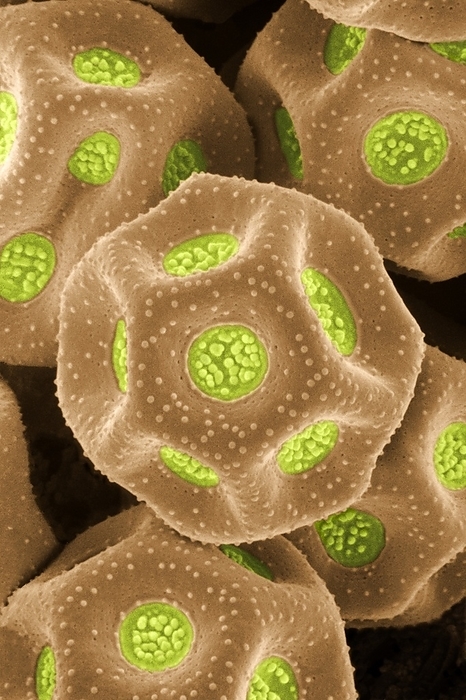
RM
Pollen of chickweed, Stellaria media
Scanning electron micrograph of pollen grains of chickweed, Stellaria media. The picture shows polygonal pollen grains, about 40microns wide. Each face has a central germ pore (yellow): an area of the exine (pollen wall) that does not contain sporopollenin. When a (male) pollen grain adheres to a (female) stigma of a compatible flower, the germ pore at the point of contact produces an outgrowth - the pollen tube. The tube grows through the stigmatic surface and carries the male gametes down to the ovary, resulting in fertilisation of ovarian egg cells by sperm from the pollen.The embryo produced develops into a seed. Many plant species can be identified from the morphology of their pollen. This is exploited in paleobotany and paleoclimatology, as sporopollenin is one of the most inert organic materials known, able to persist unchanged in sediments for hundreds of millions of years., Photo by DR JEREMY BURGESS/SCIENCE PHOTO LIBRARY

More
Top Categories
